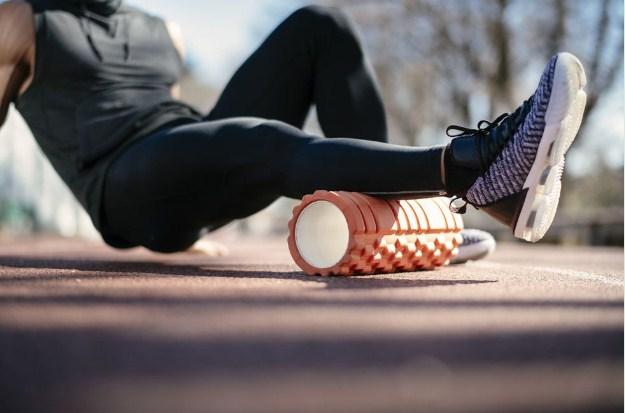When it comes to recovery after a workout, there are many methods to choose from, including foam rolling and stretching. While both techniques aim to reduce muscle soreness and increase flexibility, they work in different ways. In this article, we'll take a closer look at foam rolling and stretching to determine which one is more effective for better recovery.
Foam Rolling: What is it?
Foam rolling is a self-massage technique that involves rolling a foam cylinder over various parts of the body, with the goal of breaking up adhesions and knots in the muscles. It's often used to alleviate muscle tightness, soreness, and improve mobility.
How Does Foam Rolling Work?
The theory behind foam rolling is that it helps to release tight muscle fibers, improve circulation, and stimulate the nervous system. By applying pressure to the muscles with a foam roller, it can help to break up adhesions and knots that form within the muscle tissue, resulting in a release of tension and improved mobility.
Benefits of Foam Rolling
Foam rolling has been shown to have several benefits, including:
- Reduced muscle soreness: Foam rolling has been found to reduce muscle soreness after exercise, which can help to speed up recovery time.
- Improved mobility: Foam rolling can help to improve joint range of motion, making it easier to move and perform exercises.
- Better circulation: By applying pressure to the muscles with a foam roller, it can help to improve blood flow, which can aid in the delivery of oxygen and nutrients to the muscles.
Stretching: What is it?
Stretching is a form of exercise that involves lengthening the muscles to improve flexibility and range of motion. It's often used to prevent injury, improve posture, and reduce muscle tension.
How Does Stretching Work?
Stretching works by lengthening the muscle fibers, which helps to improve flexibility and range of motion. It can also help to increase blood flow and oxygen delivery to the muscles, which can aid in recovery.
Benefits of Stretching
Stretching has been shown to have several benefits, including:
- Improved flexibility: Stretching can help to improve joint range of motion and flexibility, making it easier to move and perform exercises.
- Reduced risk of injury: By improving flexibility and range of motion, stretching can help to reduce the risk of injury during exercise.
- Reduced muscle tension: Stretching can help to reduce muscle tension and tightness, which can improve overall muscle function.
Foam Rolling vs. Stretching: Which One is Better?
So, which one is better for recovery, foam rolling, or stretching? The answer is both.
Foam rolling is best for targeting specific areas of muscle soreness and tightness, whereas stretching is better for overall flexibility and range of motion. In fact, combining foam rolling and stretching can be the most effective way to promote recovery after a workout.
FAQs
Q: How often should I foam roll or stretch?
A: It's recommended to foam roll or stretch at least 2-3 times per week, or after a workout.
Q: Is foam rolling painful?
A: Foam rolling can be uncomfortable, especially if you have tight muscles. However, it should not be so painful that it causes injury.
Q: How long should I foam roll or stretch?
A: It's recommended to foam roll or stretch for at least 10-15 minutes per session, focusing on specific areas of tightness or soreness.
Q: Should I foam roll or stretch before or after exercise?
A: It's recommended to foam roll or stretch after exercise, as part of your cool-down routine.
Q: Can foam rolling or stretching replace a warm-up?
A: No, foam rolling or stretching should not


